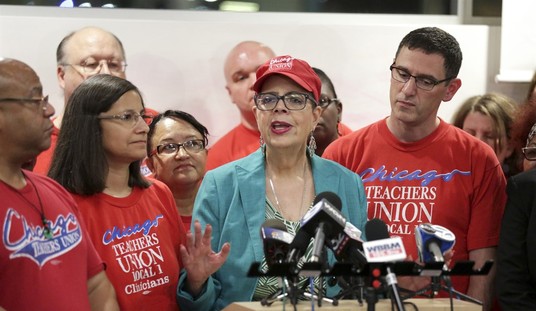A panel of three federal judges is holding a trial to determine whether to free 52,000 of California's 172,000 prison inmates to alleviate overcrowding. You might be asking yourself: Who elected these guys to run California?
One of the three judges, U.S. District Judge Thelton Henderson, determined in 2005 that California's prison health care system is so bad that it's unconstitutional. He put the system in receivership and appointed law professor Clark Kelso to oversee prison health care.
Now Kelso is demanding $8 billion to renovate the system -- even though the state is spending about $14,000 on health care per inmate, according to the Department of Corrections and Rehabilitation. (California's total health care spending was $169 billion in 2006, the California Medical Association's Ned Wigglesworth told me, which divided by 37 million comes to about $4,600 per head -- or a third of what is spent on the incarcerated.)
Here's the unfunny funny part: Criminal Justice Legal Foundation President Michael Rushford recently figured out that inmates live longer on the inside than on the outside, and they live longer on the inside than outsiders live. He found a study, "Release from Prison -- A High Risk of Death for Former Inmates," published last year in the New England Journal of Medicine, which shows that the mortality rate for Washington state inmates spiked more than 1,200 percent in the first two weeks after their release, and averaged 386 percent higher than inmates in prison during the two years after release.
Recommended
The study also found that Washington inmates have a lower mortality rate than the general population. In that Washington state inmates have a mortality rate very close to the California rate, Rushford figured that the judges should beware that by releasing 52,000 prisoners, more inmates will die. As the New England Journal study noted, "the risk of death was sharply higher after release than during incarceration." The leading cause of death for released inmates was drug overdose, followed by cardiovascular disease, homicide, suicide, cancer and motor vehicle accidents.
Apparently prison -- even prisons with shabby health facilities -- provides a healthier environment than what most criminals are used to. Behind bars, there are fewer ways to be self-destructive -- and there's health care.
I do not intend to make light of any substandard medical care in California prisons. Henderson found California penal health care to be so "fraught with medical neglect and malfeasance" as to be unconstitutional. He cited filthy conditions and poor hygiene practices -- including a San Quentin dentist "who neither washed his hands nor changed his gloves after treating patients into whose mouths he had placed his hands." Ugh. (If this were a "Law & Order" episode, prosecutors would have charged the dentist with a crime -- and rightly so.)
The good news is that after Henderson stepped in, Gov. Arnold Schwarzenegger worked to improve the prison health care system and poured money into the effort, with results to show for it. A 2007 analysis of prison deaths for Kelso reported that a number of health workers left the system, while state prisons hired board-certified professionals.
The number of inmate deaths has fallen dramatically, from 124 in the first quarter of 2006 to 87 in the second quarter of 2008. The analysis found three "preventable" deaths in California prisons, one for an inmate who ingested razor blades.
These improvements are not good enough for Kelso. As the Sacramento Bee reported earlier this year, Kelso had been working on a plan for health care facilities with art therapists, music therapists and beauticians -- at an annual cost of $230,000 per inmate, according to a corrections agency draft.
Other problems, the Bee noted, were plans to build facilities with "proximity to urban areas, in several cases, backing up to neighboring homes and schools," in a "mall-based environment" with unlocked rooms that would allow male and female inmates to mix.
Does Kelso understand that 47 percent of the California prison population are repeat violent offenders, 33 percent are repeat offenders and many of the rest are first-time felons who committed serious crimes against people, like rape and murder? Do the three judges? As the Associated Press reported, one of the three, U.S. District Judge Lawrence Karlton of Sacramento, asked recently, "In the long run, does it make any difference to public safety if we release them 60 days earlier?"
Corrections spokesman Seth Unger explained what that difference would be: "Releasing 50,000 inmates would be the equivalent of emptying 10 prisons onto the streets." Maybe Karlton doesn't worry about what the effect on the general public might be. But now we know, more prisoners may die.

























Join the conversation as a VIP Member